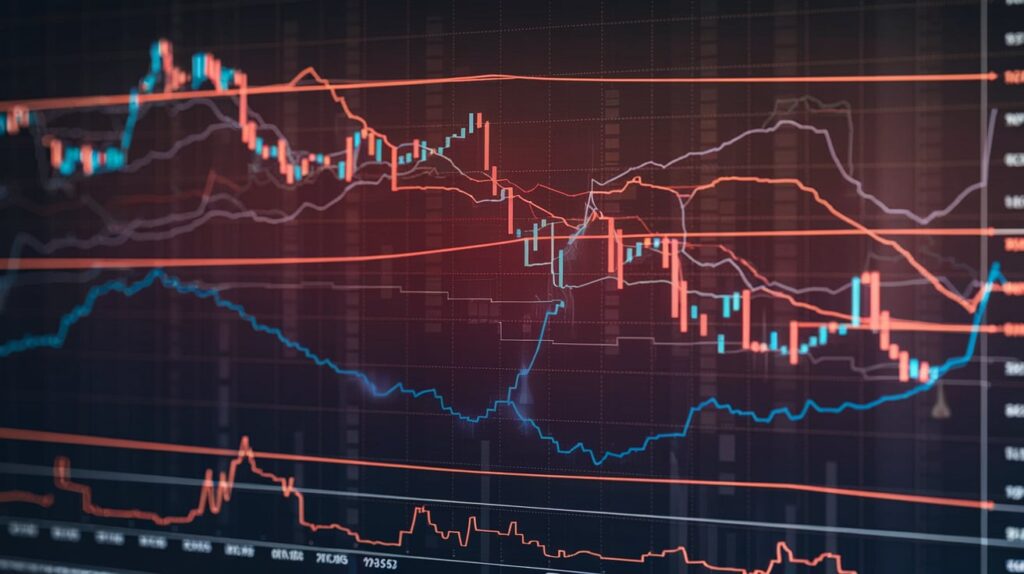
1. Introduction
On September 6, 2024, the Indian stock market experienced a significant and unsettling decline. The Sensex, a benchmark index, dropped by over 900 points, and the Nifty50 fell by more than 1%. This marked a day of considerable concern for investors and market analysts alike. The crash was a result of a complex interplay of global and domestic factors that exposed weaknesses in several key sectors. Understanding these factors is crucial for grasping the broader implications for both the Indian market and the global economic landscape.
2. Global Factors Contributing to the Decline
- U.S. Job Data Concerns
One of the primary drivers behind the market’s downturn was the anticipation of weaker-than-expected U.S. non-farm payroll data. Analysts and investors were bracing for disappointing job growth figures, which could signal a slowdown in the U.S. economy. Since the U.S. economy is a significant driver of global economic activity, any signs of weakness there often lead to a ripple effect across international markets. Investors’ anxiety about a potential deceleration in global growth led to a cautious and bearish trading environment worldwide, including in India. - European Market Weakness
The decline was further exacerbated by weak performances in European markets. The German DAX, a major stock market index in Europe, experienced significant declines. This weakness in Europe contributed to a global market sell-off, as investors often view European economic health as interconnected with other global economies. The negative sentiment from Europe intensified the already growing apprehension among global investors, including those in the Indian market.
3. Domestic Factors Driving the Fall
- SBI Downgrade
On the domestic front, a critical factor in the market’s fall was the downgrade of the State Bank of India (SBI) by Goldman Sachs. SBI, one of the largest public sector banks in India, saw its stock market price tumble by nearly 4% following the downgrade. This move raised alarms about the health of the PSU banking sector, which is a significant component of the Indian financial system. The downgrade not only affected SBI but also had a ripple effect on other public sector banks, leading to a broader sell-off in the banking sector. The downgrade highlighted concerns about the stability and performance of public sector banks, which contributed to the overall market decline. - High Market Valuations
Another contributing factor was the high market valuations in India, particularly in the context of its weight in the MSCI Emerging Markets Index. India’s market weight has surpassed that of China, raising concerns about potential rebalancing by global investors. The prospect of reduced weight allocation by these investors created additional uncertainty, as high valuations can lead to market corrections when global funds adjust their investment strategies. This concern over potential sell-offs added to the market’s volatility and contributed to the day’s decline.
4. Sectoral Breakdown
- PSU Banking Sector
The PSU banking sector was at the forefront of the market’s decline. Major public sector banks, including SBI, experienced substantial losses. This sector’s difficulties were a significant factor in the broader market downturn. The issues faced by PSU banks, including regulatory challenges and concerns about asset quality, contributed to investor apprehension and led to a substantial drop in stock market - Oil & Gas Sector
The oil and gas sector also felt the effects of the market’s downturn. Declining oil prices, combined with worries about global demand, negatively impacted this sector. Lower oil prices can lead to reduced revenues for oil and gas companies, which in turn affects their stock market. The sector’s struggles added to the market’s weakness, compounding the overall negative sentiment on September 6.
5. Technical Analysis
- Key Support Levels
From a technical perspective, the Nifty50 index approached crucial support levels on September 6. The index tested its 20-day moving average at 24,850. This level is significant as it represents a short-term trend indicator. A breach of this support level could indicate further declines. Additional support levels are at 24,500 and 24,000, which will be critical in determining the market’s near-term direction. Technical analysts closely monitor these levels to gauge potential future movements. - Potential Further Declines
If the support levels mentioned above fail to hold, the market could experience additional corrections in the near term. Technical indicators suggest that further bearish trends might emerge if these key levels are breached. Investors and analysts will be watching closely to assess whether the market can stabilize or if additional downward pressure is likely.
6. Conclusion
The stock market crash on September 6, 2024, was a multifaceted event driven by both global and domestic factors. The anticipated weakness in U.S. job data, coupled with the downgrade of SBI and high market valuations, created a perfect storm of uncertainty. Sector-specific issues, particularly in the PSU banking and oil & gas sectors, further compounded the market’s struggles. As the market navigates through these turbulent times, investors will be keenly awaiting further economic data and global developments that could influence future market trends. The current outlook remains cautious, with a focus on key technical support levels and broader economic indicators to guide investment decisions moving forward.
Images used In this Blog are generated from Ideogram
The following article is created using AI. This is for educational purposes only. Reading at user’s discretion.

